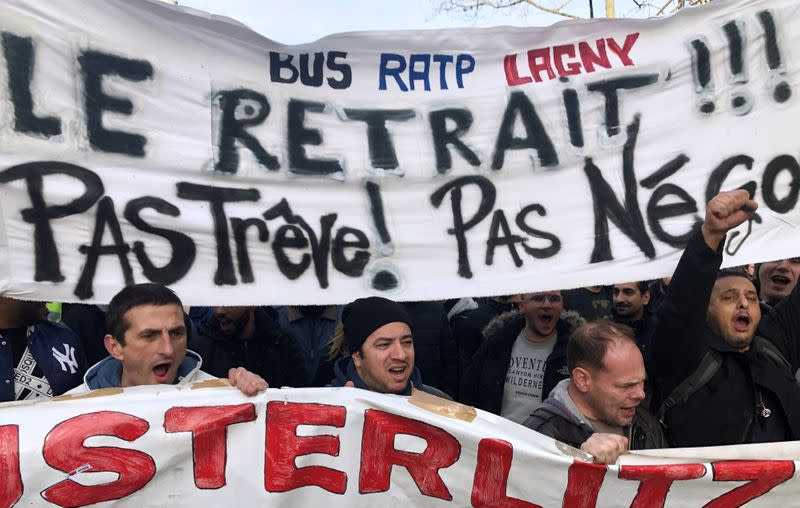Factbox: Where is France's public sector strike being felt the hardest?

PARIS (Reuters) - French trade unions paralysed transport and gathered for mass protests on Tuesday, stepping up a campaign to force President Emmanuel Macron to ditch a planned pension reform by Christmas.
Here's how the strike is impacting the country:
- POWER GENERATION
Power generation was reduced by around 2.4 GW on Tuesday due to the strike, according to power company EDF and power grid RTE. Current available generation capacity is 67 GW. Outages were reported mostly at hydrocarbon-powered power plants and hydro-electricity generators. France has enough capacity to meet its needs, but 40,000 homes in Lyon, eastern France, were cut off. The grid operators said the blackout there was "a deliberate act linked to the industrial action".
- EDUCATION
The education ministry said 25% of primary school teachers in state schools were out on strike, and 23.3% of secondary school teachers. According to the unions themselves, the numbers were twice as high as those cited by the ministry, French media reported. The figures from both sources showed strike participation was lower than on Dec. 5, the previous day when unions called for a mass mobilisation.
- TRANSPORT
The strikes have hit transport networks the hardest.
State railway operator SNCF said that a third of all railway workers were on strike, while the figure among train drivers was 75.8%. In both cases, the numbers for strike observance were higher than on Monday.
Only one in every four high-speed intercity TGV services was running, and one in every five commuter services in the region around Paris, according to SNCF. The company urged travellers not to go to stations seeking to get on trains, citing concerns about passengers getting hurt on overcrowded platforms.
The Paris urban transport network was experiencing severe delays on all its tram, bus and metro routes, according to the state-owned operator RATP. Eight of the capital's 14 metro lines were closed and the rest had a limited service, apart from two lines that run automated trains.
Some metro stations still in operation despite the strike were set to close, as a precaution, because of protests in Paris planned by striking unions.
- TOURISM
Paris's most famous landmark, the Eiffel Tower, was closed to visitors, with managers citing the strike, and the Palace of Versailles was also shut. The Louvre Museum, home to Leonardo da Vinci's Mona Lisa portrait, remained open.
(Compiled by Christian Lowe; Editing by Mark Heinrich)


